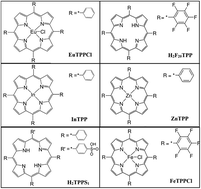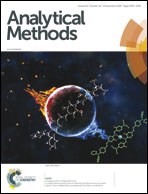A laser-induced fluorescent detector for pesticide residue detection based on the spectral recognition method†
Abstract
In the present study, a laser-induced fluorescent (LIF) detector was developed for pesticide residue detection based on a microfluidic-based fluorescent sensor array (MFSA). A spectral recognition method (SRM) was proposed for unsupervised pattern recognition, which was utilized to analyze the experimental data. Four pesticide residues (i.e., carbendazim, diazine, fenvalerate and pentachloronitrobenzene) were used to evaluate the differentiating capacity of the device. The results indicated that the selected pesticides could be well distinguished via producing characteristic fluorescent spectra fingerprint-like response patterns. The device exhibited a good linear relationship region (0.01 to 1 ppm), and we obtained responses toward concentrations below 10 ppb; in addition, its practicability, reproducibility and stability were also estimated. Consequently, we infer that the device has excellent potential for discrimination applications via adopting a new way of spectral visualization.

- This article is part of the themed collection: Analytical Methods Recent HOT articles


 Please wait while we load your content...
Please wait while we load your content...